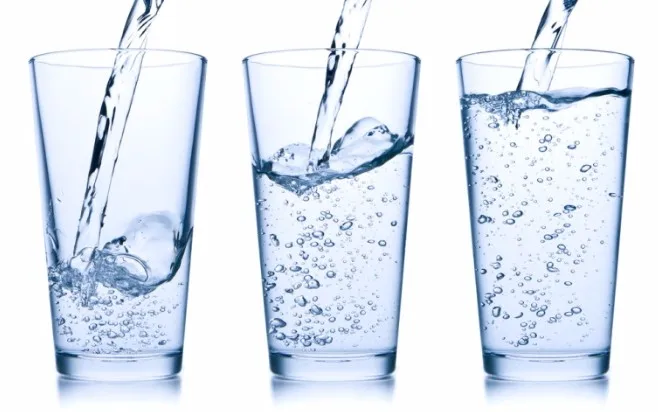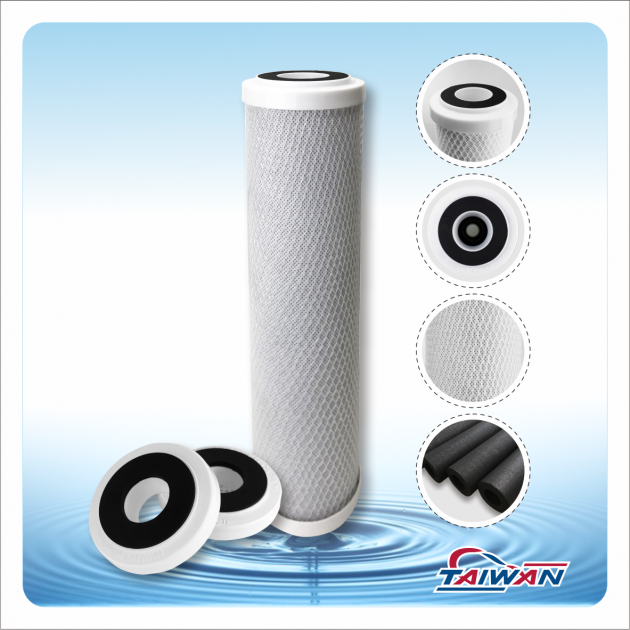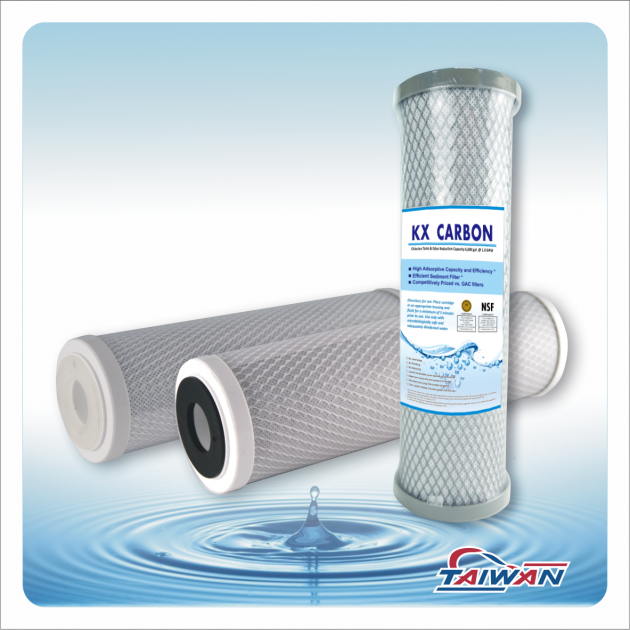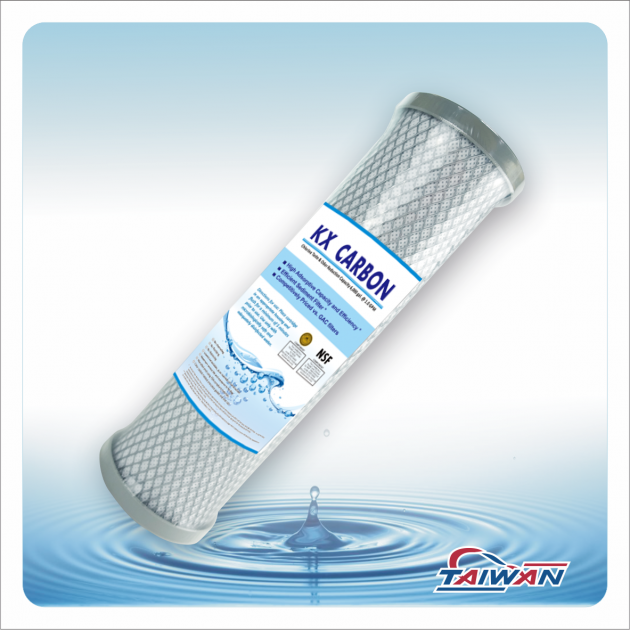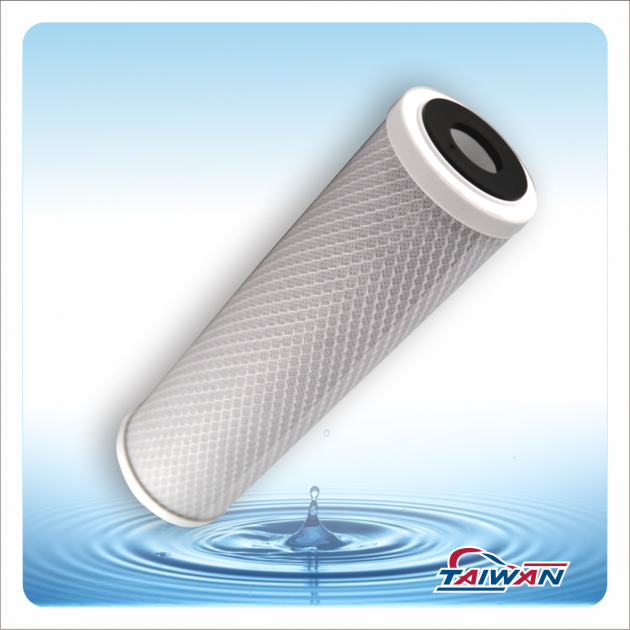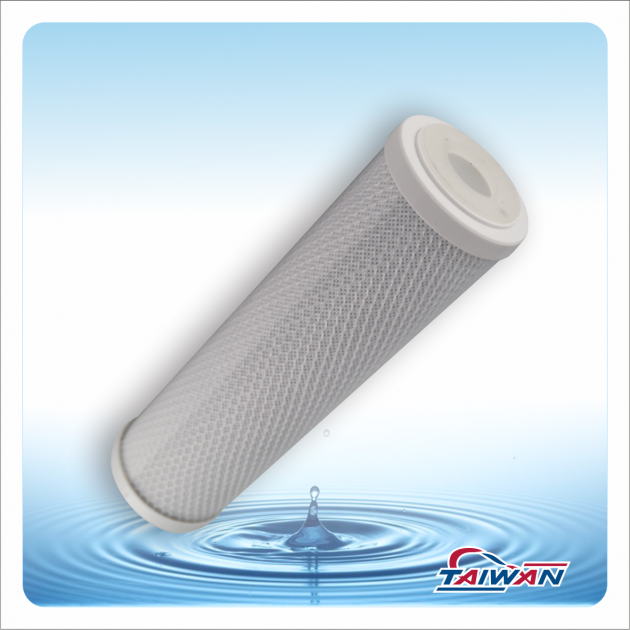10 inch CTO Activated Carbon Block filter
Features:
- This carbon filter is manufactured from high purity acid washed activated carbon. It is ideal for use in residential and commercial water purification systems, food service, and as pre- filter in Reverse Osmosis systems.
- With Nano-Silver thin film this CTO Carbon Filter has bacteria resistance up to 99%.
- Removes chlorine, taste and odor, and organic chemicals that contribute to bad taste and odor.
Application:
- Pre-treatment in Residential water filter system or reverse osmosis water purifier.
Specification:
| Item No. | TWDC-CTO-10 |
| Size | 2 3/4" OD x 9 3/4" Length |
| Micro Rating | 5u |
| Min./Max.Operating Pressure | 20psi/125psi |
| Min./Max. Temperature | 4°C/38°C |
| Chlorine reduction capacity | 6,000 Gal@1GPM |
| Max. Flow Rate | 1 GPM |
What do carbon filters remove from water?
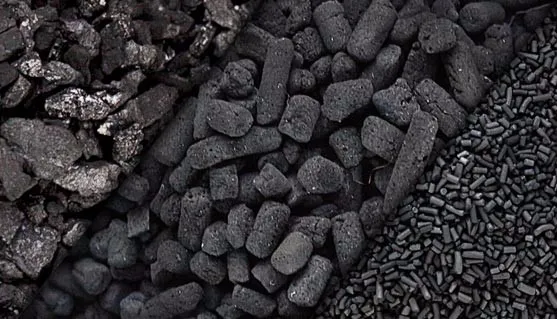
Water purification removes harmful contaminants from water. Filtration, which physically blocks or chemically removes contaminants, is a different purification technique from reverse osmosis, which filters water through a semi-permeable membrane, and distillation, which vaporizes water to separate it from the contaminants. Carbon filtration is a relatively cheap and efficient way of to purify water.
How Carbon Filters Work
Carbon filters work so well because of their large surface area. According to the Home Water Purifiers and Filters website, one pound of carbon has a surface area of approximately 125 acres. This allows carbon to physically absorb a large amount of chemicals and substances that pose serious dangers to the normal domestic water supply. Many of these substances can cause cancer, neurological problems and other health risks if ingested in large quantities.
Types of Carbon Filters
There are generally two types of carbon filtration: granular activated carbon and block carbon. Activated carbon has a slightly positive charge so it can attract impurities, but block carbon has a higher contaminant removal ratio. However, there are many factors that affect this rate, including the amount of carbon in the unit, the flow of water, the length of time contaminants spend in contact with the carbon and the particle size. Carbon can remove particles 50 micrometers to 0.5 micrometers in size.
What Carbon Filters Remove
Carbon filters are very effective at removing a number of deleterious chemicals, reports the Home Water Purifiers and Filters site. These include chlorine, benzene, radon, solvents trihalomethane compounds, volatile organic chemicals such as pesticides and herbicides and hundreds of other man-made chemicals that may come into contact with tap water as it proceeds through the system. In addition, filters remove bad tastes and odors from the water.
What Carbon Filters Don't Remove
Carbon filters are not particularly successful at removing dissolved inorganic contaminants and heavy metals such as minerals, salts, antimony, arsenic, asbestos, barium, beryllium, cadmium, chromium, copper, fluoride, mercury, nickel, nitrates, selenium, sulfate, thallium and other contaminants, which may require a reverse osmosis system or distiller instead. Carbon block filters can remove some large, dangerous microorganisms, such as giardia and cryptosporidium, that can cause a number of diseases and epidemics, but nothing less than the size of the carbon itself. Viruses are too small to be removed by carbon, as they usually range between 20 and 400 nanometers in size, according to the University of Oregon.
Considerations
Carbon filters are even more effective if you ad physical or chemical absorption to the mix. Iron, manganese and hydrogen sulfide can be removed by high quality carbon filters, but a manganese iron reduction filter is generally more effective at removing these particles, especially at higher concentrations. A sediment pre-filter is better at removing sediment and particulate material, and extends the life of the carbon filter by preventing clogs, according to Home Water Purifiers and Filters.
